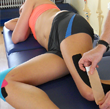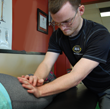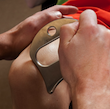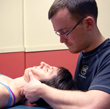Massage and Mechanical Therapies
To really connect with the physical person, and to fully understand how their body is functioning and responding to our work, mechanical therapies are an essential component. I have spent countless hours learning anatomies and biomechanics and obtained my license as a Massage Therapist and my certification in Neurokinetic Therapy. As important as physical activity is to the body, developing a connection with musculature and nerve function is an equally critical component in achieving goals. My clients regularly benefit from orthopedic massage and deep tissue manipulation.




